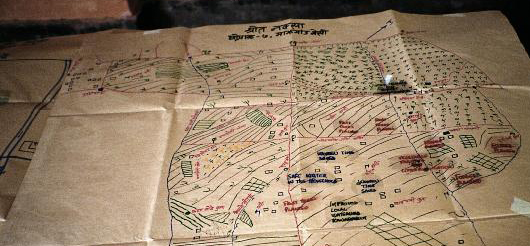Those engaged in multi-stakeholder consultations are faced with a plethora of potentially useful techniques to promote public involvement through: information sharing, communications, planning, negotiating, consensus building and conflict resolution. Methods continue to proliferate as successive authors invent new language for or fine-tune classical techniques. The consulting fraternity frequently appropriates well-known...
Many organizations and institutions have been, or are currently, testing or piloting multi-stakeholder dialogue mechanisms, aimed at improving decision making in the forestry sector. However, to date, little or no systematic assessment of the effectiveness of the various mechanisms has been conducted. The FAO Regional Office for Asia and the...
The Government of the Republic of Zambia is currently assessing the opportunity that REDD+ may provide through different forest and land management practices in Zambia. As one of the fourteen developing countries piloting the UN-REDD Programme, Zambia is determined to take advantage of these opportunities. Well-designed REDD+ frameworks are expected...
Regional forest agreements (RFAs) in Australia
13 May 2014
13 May 2014
Regional Forest Agreements (RFAs) are 20-year plans for the conservation and sustainable management of Australia's native forests. There are 10 RFAs in four States: Western Australia, Victoria, Tasmania and New South Wales. The Agreements provide certainty for forest-based industries, forest-dependent communities and conservation. They are the result of years of...
Zoning the forest
13 May 2014
13 May 2014
In 1996, the Government of Guyana passed national legislation (the Iwokrama Act) establishing the Iwokrama International Centre (IIC) for forest research and development and giving it responsibility for the management of the Iwokrama Forest, a 370 000 hectare forest area in the heart of Guyana. The Centre’s major goal is...
Land use planning guidelines for Somaliland
13 May 2014
13 May 2014
The purpose of the present Guidelines is to: explain the basic principles of land use planning; indicate which land use planning activities could be carried out in Somaliland at different levels, and how; provide a number of tools and resources which could be of practical use by land use planners...
This manual provides guidance to future facilitators of participatory processes in the framework of integrated regional land use planning (IRLUP), steered by the Namibian Ministry of Lands and Resettlement (MLR). It was developed in the context of the Karas IRLUP-project. Since the development of comprehensive land use planning (LUP) guidelines...
Participatory agriculture and forest land use planning at village and village cluster level - Manual
13 May 2014
13 May 2014
To document improved approaches and procedures that can be used for future participatory forest and agricultural land use planning (PLUP) at village and village cluster levels, and in a range of different situations in the Lao PDR. Objectives of the manual are to: explain the participatory approaches that should be...
Local strategic planning and sustainable rural livelihoods. Rural district planning in Ghana: a case study
13 May 2014
13 May 2014
This study is a contribution to DFID's sustainable rural livelihood (SRL) theme which seeks among other objectives to increase knowledge and awareness of vital cross-cutting planning issues and to develop and test innovative local planning approaches with the view to provide support to rural district planning in selected African countries...
In recent years many Multistakeholder Processes (MSP’s) have developed in Indonesia particularly as a means to establish much needed dialogue about forest policy reform involving all relevant stakeholders, from government officials to local community members.
Multistakeholder Processes (MSP’s) have been seen as an innovative way to deliver much needed...

